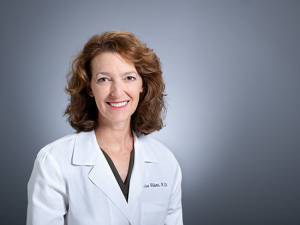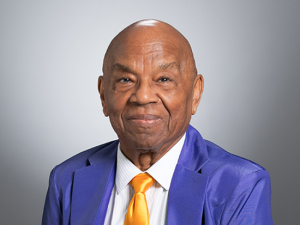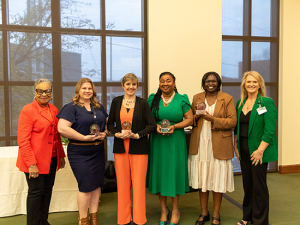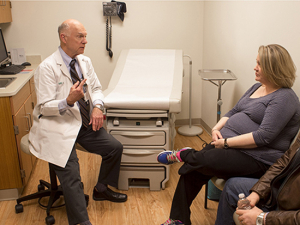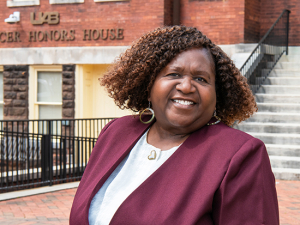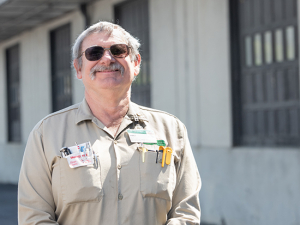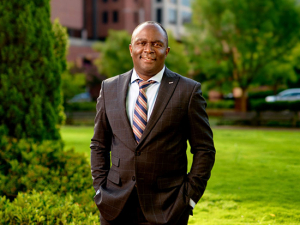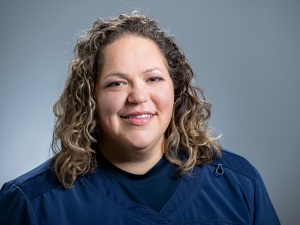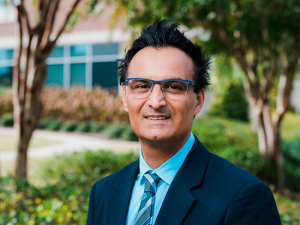 Robert Centor, M.D., one of the world's leading experts on sore throat and a renowned educator who has won every teaching award in the School of Medicine, has been selected as recipient of the highest honor bestowed by the Academic Medical Center. He will deliver his lecture 6:00 p.m. April 20 via Zoom.The next time you wake up with a sore throat, think of Robert Centor, M.D. Your doctor will.
Robert Centor, M.D., one of the world's leading experts on sore throat and a renowned educator who has won every teaching award in the School of Medicine, has been selected as recipient of the highest honor bestowed by the Academic Medical Center. He will deliver his lecture 6:00 p.m. April 20 via Zoom.The next time you wake up with a sore throat, think of Robert Centor, M.D. Your doctor will.
Centor, professor emeritus in the Department of Medicine and longtime associate dean for the School of Medicine's Huntsville Regional Medical Campus, is one of the world's leading experts on sore throat. His seminal work on Group A streptococcal infections as a cause of sore throat "now bears his name in practice guidelines and decision aids — literally impacting the health of millions of patients each year," said Carlos Estrada, M.D., professor of Medicine and director of the Division of General Internal Medicine in the School of Medicine.
For hundreds of medical students and residents, Centor is equally well known for "his combination of wit and love for physiology," Estrada noted, which have earned him every teaching award offered in the School of Medicine, multiple times. Centor's contributions to medical education also have been recognized repeatedly by his peers at UAB and beyond. He was selected as recipient of the President's Award for Excellence in Teaching in 2000. In 2017 he was awarded both the Ellen Gregg Ingalls/UAB National Alumni Society Award for Lifetime Achievement in Teaching — becoming the first physician to win this award — and the Robert J. Glaser Award from the Society of General Internal Medicine, the highest award in academic internal medicine, for lifetime contributions in education, clinical research and leadership.
Now, Centor's legacy in education and research, along with his service to UAB and his profession, have earned him an invitation to deliver the annual Distinguished Faculty Lecture. This is the highest honor bestowed by the Academic Health Center on a faculty member who has advanced the frontiers of science and made outstanding contributions to education, research and public service. Centor's lecture, The Importance of Clinician Educators, will be delivered 6:00 p.m. April 20 via Zoom. (Register to attend here.)
'I hated the first two years of med school'
Centor grew up among the Blue Ridge Mountains, in the small town of Marion in Virginia's southwest corner. He attended the University of Virginia and started at the Medical College of Virginia in 1971. "I hated the first two years of med school, and I was mediocre at it," Centor said. "But in my third year, in the very first week I was on the internal medicine service, I realized that's who I was; it was an epiphany, almost. Internal medicine for me is such an incredible profession. It's a combination of what we naively call the left brain and right brain — it requires a highly intellectual clinical reasoning and at the same time it demands an ability to interact with patients and extract the information you need while being able to give the patients what they need."
Distinguished Faculty Lecture April 20Centor's lecture, The Importance of Clinician Educators, is scheduled 6:00 p.m. April 20 on Zoom. Register here to attend. |
As he fell in love with internal medicine, Centor also realized the power of great mentors. "It was the residents and attendings I interacted with as a third-year and fourth-year medical student who were my role models," he said. As he became a resident himself, Centor discovered that he enjoyed serving as a role model to others. "Part of the Hippocratic Oath is that we have an obligation to teach others and help those coming up behind us,” he said. “I found that I loved the process of trying to help people improve.”
‘Did you get your money’s worth?’
"He often asks students, 'Did you get your money's worth today?' referring to the medical school tuition," Estrada said. "This humble approach illustrates Bob's motto when teaching: We are here to serve our students, and we are not here to serve ourselves or promote our agendas."
"He has mentored selflessly across his career, and relishes more in the success of others (his learners, mentees and colleagues) than his own," said Lisa Willett, M.D., professor of Medicine and director of UAB's Tinsley Harrison Internal Medicine Residency Program.
"To be present with your learners, as he was for us and as I saw him with so many others, in the moment, revisiting the same concepts day after day, is exceptional," said Alexandra Leigh, M.D., a former medical student, resident and chief medical resident at UAB now on the faculty at the Tulane University School of Medicine. "To make the joy of medicine enough to overcome the sometime brutality of the health care system was inspiring. He gave me, and continues to give others, the confidence to move beyond what is comfortable."
| "He has mentored selflessly across his career, and relishes more in the success of others (his learners, mentees and colleagues) than his own." |
“Being able to infect others with the beauty of internal medicine is, to me, the greatest thing that I could possibly do," Centor said.
Enter the Centor
Infections — specifically, the infections behind sore throats — turned out to be the source of Centor’s worldwide fame. It’s a story that starts in 1980, when he was a chief medical resident at the Medical College of Virginia. "One of my jobs was to supervise the walk-in clinic for non-emergency patients in inner-city Richmond," he said. "One day a resident asked me a question about what we should do for this patient who came in with a sore throat."
Sore throat is one of the most common reasons why patients visit their doctors. Most sore throats are caused by viruses. But they can also be caused by bacteria, particularly the streptococcal bacteria responsible for strep throat. And determining the cause determines the right course of treatment.
"There were no rapid tests at the time," Centor said. "We could do a throat culture, but at least 30% of our patients had no phone or way we could get back in touch with them to provide results. We had to make a decision right then about what was going on, and I realized I had no idea of what I was doing. That's unusual; by the end of your residency, you think you know everything. So I said, 'There should be a way to examine him and make a decision.'”
This was an era when discovering information meant a trip to the library, not Google, Centor emphasizes. “I walked three blocks to the library and read up a bit and got this idea of doing a study where we cultured people and wrote down the signs and symptoms they presented. Then we could do statistical analysis to help us predict if someone had strep or not."
After collecting data on nearly 300 patients, Centor took the data to a statistician, “which is exactly the wrong way to do it, I discovered,” he said. Nevertheless, the statistician recommended he try a brand-new computerized technique for logistic regression. "I had to teach myself punch cards," Centor said. "Back then you carried the cards in a little box and I had to figure out how to run the program and what it meant. This was a major nerd-out. But I got results that were promising.”
| "To be present with your learners, as he was for us and as I saw him with so many others, in the moment, revisiting the same concepts day after day, is exceptional. To make the joy of medicine enough to overcome the sometime brutality of the health care system was inspiring. He gave me, and continues to give others, the confidence to move beyond what is comfortable." |
A colleague suggested “I go to a meeting in Boston on decision analysis” to share what he had learned, Centor said. “While I was there, a gentleman who would go on to become the dean of public health at Harvard said they needed an abstract for the second meeting of the Society of Medical Decision Making, and he encouraged me to submit a manuscript. I eventually became president of that organization." Centor previously had sent his manuscript to the New England Journal of Medicine, but "their rejection letter came back faster than I sent it," he recalled with a laugh. "I don't know how they got it back so fast.” Soon enough, however, he got a letter from the brand-new editor of the journal Medical Decision Making, “who requested that I publish in their journal,” Centor said. “A number of other people started using it to see if it worked and then to test other theories about how physicians could predict sore throat."
That paper led to a widely used diagnostic decision aid known as the Centor score or Centor criteria, which has its own Wikipedia page and is still generating discussion and new research. (The “Enter the Centor” subhead above comes from a recent blog post by physicians at the University of Cincinnati.)
'Saw UAB as an incredible opportunity'
In 1986, Centor was named chief of the Division of General Internal Medicine at the Medical College of Virginia, and he became a full professor in 1992. The next year, the chair of the Department of Medicine at MCV, Harold Fallon, M.D., was hired as the dean of UAB's School of Medicine. "The very first day he called me and said he would like to bring me down as an associate dean for primary care and director for a new division of general internal medicine, which UAB did not have at the time,” Centor said. “I was looking to branch out and do something different, and I saw UAB as an incredible opportunity."
A few years later, Centor was asked to step in as interim dean for the School of Medicine's campus in Tuscaloosa, which focused on training third- and fourth-year medical students for careers in primary care and rural medicine. That experience led him to be named associate dean and executive director of the Huntsville Regional Medical Campus in 2005, a position he held until 2017. "I knew every student, taught them on the wards, made rounds with them, gave lectures and helped them go through the residency match process," Centor said. "And I helped start an internal medicine residency there that is doing well."
UAB has many missions, Centor said, "but one of the ones the state expects from us is to produce physicians for Alabama, and the big need is rural." At the Huntsville campus, Centor emphasized embracing students with an interest in rural medicine and giving them role models to build their careers around. "That's one of the great things that I learned by talking to students," Centor said. “I don't try to talk students out of doing what they want to do, unless it's a terrible match for them. We want to say, 'You're interested in X — that's great; how can we help you?"
National leader
Meanwhile, Centor was serving the internal medicine profession on a national stage. He has held positions as the chair of the Board of Regents of the American College of Physicians, president of the Society for Medical Decision Making, and president of the Society of General Internal Medicine. He has contributed to the New England Journal of Medicine, American Journal of Medicine, Journal of General Internal Medicine and the Journal of Hospital Medicine among others.
| “Internal medicine for me is such an incredible profession. It's a combination of what we naively call the left brain and right brain — it requires a highly intellectual clinical reasoning and at the same time it demands an ability to interact with patients and extract the information you need while being able to give the patients what they need." |
As leader of the American College of Physicians, Centor “was one of the architects of the ‘Patients Before Paperwork’ initiative to decrease burnout amongst physicians in ambulatory practices by tackling issues imposed by regulatory agencies and the electronic health record,” Estrada said. “Bob often says, ‘we often measure things that don’t matter and things that matter cannot be measured.’ Bob’s impact in the professional lives of hundreds of physicians and in the livelihood of our professional organizations cannot be measured by the usual metrics of fame or fortune – but they are demonstrated by the success of these individuals and the growth of academic general internal medicine.”
Centor continued to make an impact in the diagnosis and treatment of sore throat. In the early 2000s, he had started a blog and was looking for interesting topics. He came across an article from BBC News about an increase in diagnoses of a rare disease called Lemierre's syndrome, which is caused by an infection with Fusobacterium necrophorum and can result in fatal clotting. “It primarily affects otherwise healthy young people, and it starts out with a very bad sore throat," Centor said. "It was a fairly unknown disease then, but I started getting some patients and writing blog posts and some editorials about this.”
At the time, Centor was mentoring a medical student in Huntsville with an interest in scholarly writing. The student worked with technicians at UAB to develop the first polymerase chain reaction (PCR) test in the United States for Fusobacterium necrophorum. "Once we had the PCR test, we had to do something with it," Centor said. "So we repeated the same sort of study I had done in Richmond." Based on data from 312 students collected at UAB's Student Health Clinic, Centor and colleagues reported in the Annals of Internal Medicine in 2015 that F. necrophorum was far more common than had been thought. They detected the bacterium in more than 20% of patients with sore throat symptoms, compared with 10% for Group A strep and 9% for Group B strep.
'Exponentially expanding his teaching'
Even as a world-renowned expert in sore throat and a national voice in the internal medicine profession, Centor has seen his main calling as mentorship. “I realize now that my overarching goal for the past 45 years was to help learners progress,” he said.
"Bob is a leader and an innovator in teaching techniques at UAB," Estrada said. Under his leadership, UAB's academic medical center was one of the first institutions in the country to start a weekly ambulatory morning report conference to share details on helpful cases. "Seeing him interact in this small-group setting was truly mesmerizing," said Gustavo Heudebert, M.D., professor of medicine and former dean of the Montgomery Regional Medical Campus, who was recruited by Centor to UAB from UT Southwestern in Dallas in 1995. "He kept a nice balance between deep questioning and levity that allowed for in-depth discussion and thorough probing of understanding."
Centor also launched a monthly clinical problem solving (CPS) conference for faculty, based on a popular format from the New England Journal of Medicine. "Bob is the contributor to many of the CPS-style publications from UAB published in the New England Journal of Medicine and other top journals in general internal medicine," Estrada said.
It was during his tenure as a leader in the American College of Physicians that Centor was drawn into podcasting, a medium he has used to expand his teaching "exponentially," Estrada said. "You get to know everybody in a role like that, and I knew the editor of the journal Annals of Internal Medicine very well," Centor said. "She said she would like me to do something with social media for Annals and during the year we decided on doing a podcast based on the articles from the Annals."
Annals On Call, which now numbers more than 60 episodes, reaches physicians and trainees across the globe, Estrada said. "I pick the topics and the people to interview," Centor said. "Sometimes it's a recent article but I have gone back as far as the 1950s." During the COVID-19 epidemic he has been able to call on world-renowned UAB colleagues in infectious diseases, including vaccine expert Paul Goepfert, M.D., who offered a primer on COVID-19 vaccines, and division director Jeanne Marrazzo, M.D., who discussed challenges in diagnosing COVID-19.
Centor's focus on diagnosis has only increased during his decades in medicine. "Diagnostic reasoning is the secret sauce of why I got so excited about internal medicine in medical school," he said. "Diagnosis is job one; if we get that right, we have a much better chance of coming up with the treatment that will help each patient."

